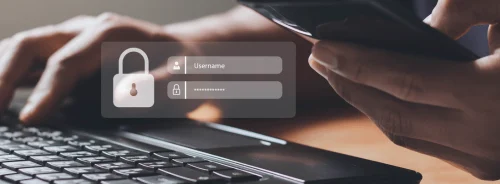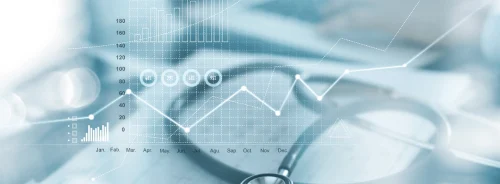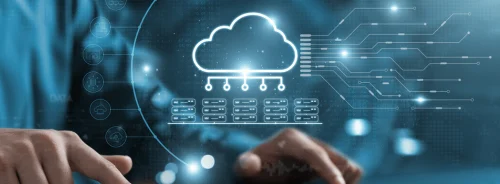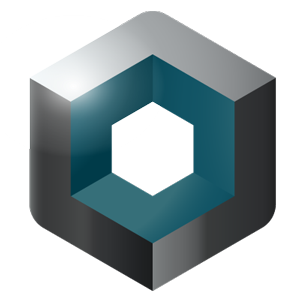HealthManagement, Volume 5 / Issue 5 / 2010
25 projects from across Europe and beyond will compete in the IT @ Networking Awards 2011 on January 19 – 20 2011. This high-level competition will see candidates go through two rounds of presentations in an effort to persuade the expert audience and panel of judges why their solution deserves to win. If last year is anything to go by, attendees will not hold back in cross-examination of each presenter during the Q&A sessions before placing their vote for their favourite solutions.
Once again, the depth and breadth of candidate submissions for the awards convincingly demonstrate that European healthcare IT is second to none in its innovative capabilities. Nor do its researchers lack the zeal and drive to deliver solutions that address the ever-growing, real-world challenges of spiralling healthcare costs and an aging population in Europe. What is required is the will to get such a message known, in Europe's healthcare IT community – and beyond. This is indeed one of the over-arching goals of IT @ 2011. This article introduces you to each competitor in the running for the award.
European Union
OLDES - An Affordable and Customisable Telecardiology System
Marco Carulli
An ageing population is considered to be one of the biggest challenges facing healthcare financing and delivery in Europe. e-health has long been seen as offering at least some solutions. But not all old people are the same. Neither are the diseases. Nor are the clinical conditions of each specific disease. The challenge is to fine-tune e-health offerings, and do this cost-effectively. The EU-funded "Older People's e-Services at Home" (OLDES) project has been deployed in the Czech Republic and Italy.
SIEMENS Soarian clinicals – The Workflow Driven and Web Based Hospital Information System Implemented in a European Hospital
Janine Zeilner
Soarian clinicals enables healthcare organisations to quickly and cost-effectively respond to the demanding needs of today's healthcare environments and to adapt quickly to change. The workflow driven design addresses the dynamic nature of patient care. As a result, healthcare organisations are positioned to manage processes as well as clinical data to help improve operational efficiencies and the business of healthcare. The project presented will show the advantages of workflow support and web based technologies of clinical systems.
EUREQUO: Web Based Disease Registry for Quality Outcomes in Ophthalmic Surgery in Europe
Rainer Waedlich
Cataracts and refractive surgery are not only the most frequent interventions in the world, but also have a perceptibly high impact on the patients' quality of life. EUREQUO seeks continuous improvement in treatment, via interconnection of 18 European registries reporting clinical outcomes in standardised templates. This, in turn, permits exchange of best practices between practitioners on the basis of local, regional or pan-European comparisons. The next step is the development of evidence-based European Quality Guidelines. The project also promises replicability for other practices.
Austria
HIS/CIS for Process Optimization
Franz-Georg Pichler
Process optimisation (and the accompanying cost-saving) is the Holy Grail of IT. Given the huge challenges accompanying legacy systems, new hospitals remain the ideal test bed for optimised applications in areas such as patient appointments, bed-planning, surgery-scheduling and documentation, automated ordering across the supply-chain, as well as outpatient follow-up. Klagenfurt, Carinthia's largest hospital, used a new (700-bed) facility to upfront design, adapt and interface its medical, nursing and supply processes in order to optimise patient treatment and costs. Its experience may hold lessons for the spate of other new hospitals being planned in Europe and beyond.
Belgium
Clinical Workstation (CWS), the GPS of Every Medical User
Prof. Rudi Van de Velde
Based on a component-based, multi tier J2EE architecture, UZ Brussels, a teaching hospital has developed a Clinical Workstation. The key innovation is an application server, which provides depth embedding of the complex business logic of a medical environment at the back-end. This provides smart/holistic insights to users of all patient and hospital-related information and processes. The architecture allows evolution and is thus future proofed. One major challenge was to also simplify the user experience, to minimize training and manage change more efficiently. In spite of a massive increase in data, as many as 95 percent of physicians are satisfied with the system.
BULGARIA
Integrated Automated System for Remote Diagnosis of Patients
Dr. Kiril Karamfiloff
This project, at the "St. Ekaterina" University Hospital of Sofia, aims at automated remote diagnostics of cardiovascular patients, with critical, decision-support information transferred in the shortest period after an event. As ambulance crews know, a response within the first so-called 'Golden' hour of a cardiac event usually makes all the difference. The GPRS-based system transfers key data (ECG, heart rate, Sp02 and blood pressure) in real-time from a patient's home or another non-medical facility during transport by ambulance, while storing the information at the hospital (as well as relayed data on any actions taken by the ambulance/emergency teams).
Germany
From 'Micro-' Towards 'Macro-' Mobility – building efficient clinical processes by using a hospital-wide, standardised and 'near-' patient communication platform
Dr. Carl Dujat
Current HIS systems face a lack of functionality in integrating patient and clinical data, documents and reports, which are stored in special, often-proprietary clinical applications. Such a problem, in fact, underlines the challenges of setting up an Electronic Patient Record, to give an 'over-all patientcentric view' of all relevant clinical data within the HIS. This project took a best-practices approach to several overlapping issues – namely migration and consolidation of proprietary clinical data collections, the design and implementation of a hospital-wide Master Patient Index (MPI), the development of a standardised/IHE-based patient and clinical data repository and the use of unified object identifications (OIDs) for all patient and clinical data objects. Its goal is to simplify systems complexity, enhance standardisation without compromising flexibility and reduce vendor lock.
IT Meets Medical Engineering – Process Optimization in Medical Documentation
Dr. Andreas Bess
This project aims to optimise both IT and medical engineering and achieve cost savings. It has selected two specialist hospital test sites. In the first, current treatment processes are first analysed - without medical devices. This is followed by integration of the latter and a re-evaluation of the treatment processes. A comparison is then made to evaluate their pluses and minuses, both with and without device connections. In the second test site, treatment processes are analysed without electronic requirements management. This is followed by a prescriptive establishment of the parameters of electronic requirements management – from both an organisational and technical perspective, as well as their implementation and comparative evaluation.
India
Healthcare for the Rural Poor - WHP's Initiative
Prachi Shukla
The project combines technology with village entrepreneurs acting as facilitators to connect rural communities with formally qualified urban doctors, enabling them to access timely and quality healthcare close to their homes. It is done through VSAT/ADSL connectivity coupled with a device – ReMeDi – that runs on two watts of power. The Remote Medical Diagnostic, integrated with audio-video conferencing software, enables getting real time diagnostics such as BP, Auscultation, Temperature and ECG. This runs at 64 Kbps and can be run over a telephone line as well.
Italy
Open Source Clinical Portal to Integrate Care Processes and Research
Paolo Locatelli
This project draws on experience with an open-source/open architecture Clinical Portal for HIS access and seeks to become a reference case of software reuse inside the Italian healthcare environment. The Portal covers most features of an EHR. Alongside compliance with syntactic and semantic standards, parameterisation of new vocabularies and system modularisation, it allows networking of diagnostic subsystems and digitalizing of information streams between clinical processes. The unifying of clinical and administrative patient data, in turn, enables physician decision support.
Telecounselling Service for Ischemic Stroke Management
Claudio Saccavini
Ischemic stroke is a major cause of death and disability. Intervention via thrombolysis can only be done in a well-organised hospital, due to a high risk of haemorrhage. This teleconsultation project is based on a proven interoperability infrastructure and IHE Integration profiles, as well as consolidated clinical evaluation tools such as as the SITS-MOST protocol and NIH Stroke Scale. It enables sharing of documents and CT images and secure videoconferencing. It aims at a five-fold increase in the number of thrombolysis treatments, within three hours of the start of symptoms.
ICTs System to Support Healthcare Logistics in Friuli Venezia Giulia Region
Paolo Forza
This project creates an end-to-end logistics platform for managing the pharmaceutical and medical devices supply chain in Friuli Venezia Giulia Region. The project has proceeded in two phases: firstly, to integrate warehouse and stock management, along with the procurement and delivery of the goods to local health authorities using a standardised format; secondly, to monitor and regulate all aspects after the arrival of a product (traceability from warehouse to the final patient, verification of patient-to-drug association, stock control in hospital wards etc).
Norway
Inventing Digital Hospital Infrastructure at St Olavs Hospital
Arve-Olav Solumsmo
The new 800-bed St Olavs Hospital has entailed a wholly new ICT infrastructure (5000 PCs, 5500 IP phones, 150 servers and 1100 wireless access points), utilizing a single converged IP network with over 100 completely separate VLANs, each with its own service level and rules for authorisation and access. The mantra of IP overall/all-over IP has involved integration of several disparate networks (data, paging, television, telephony, video, mobile, and clinical systems such as PACS and nurse calls) to one IP multiprotocol label switching (MPLS) medical-grade network with a reliability requirement of 99.999 percent. A digital EHR system is now in place, with speech recognition, alongside a hospital-wide drug dispensing system using automated pill pick machines.
Speech Recognition at St. Olavs Hospital
Arve-Olav Solumsmo
In the deployment of Speech Recognition at St. Olavs University Hospital in Trondheim Norway, 550 doctors went from training to full use in 15 weeks. 62 medical typists were made redundant and the typing pool was reorganised and moved. All doctors' notes are now expected to be made using speech recognition. The project reduced the typing pool by 70 percent, makes nearly 20000 notes per month available as text earlier than before (68percent of doctors have noticed this improvement), has stabilized the output of discharge notes around 65 percent within one week (stabilized but not increased), while the text of notes has become shorter and more factual (doctors are divided over whether this is positive or not).
Poland
3-Dimensional Telediagnostic System for Postural Deformities Detection and Monitoring
Dr. Wojciech Michal Glinkowski
Detecting postural deformities usually requires on-site subjective examination. This project focuses on telediagnostic analysis of a patient's trunk surface for detecting and monitoring deformities, based on structured light which measures the body in 3D via projection of a set of raster images on its surface. One unique feature is the system's ability to operate remotely, carrying out interpretation by telemedicine, and utilizing a data warehouse. The system comprises independent modules which deal with measurement, data archiving and analysis, communicating over TCP/IP (with two channels, respectively for text and images). Telerehabilitation videoconferencing services are delivered for patients located in distant schools, outpatients clinics or homes where physiotherapy programmes are unavailable.
Russia
Modern Technology for Distance Interactive Tele-education: Our 12-Year Experience
Valery Stolyar
Real, cost effective technology for distance interactive teleeducation. For the past 12-years, physicians in Russia, UK, USA, Germany and France have utilised this video-conferencing technology for lectures, training courses, tele-symposiums, as well as real-time transmissions of operations and investigations– in paediatric cardiology, endovascular and cardiac surgery (point-to-point and multipoint videoconference). Every week specialists of Bakoulev Centre of Cardiovascular Surgery conduct regular training for doctors from the Russian regions, including interactive real-time transmissions of cardiac and endovascular operations (>4200 hours per year).
Spain
Web 2.0 to Share Medical Knowledge and Improve Care: The Scientific Social Network of Madrid Health Region
Manuel Vallina
Madrid Health Region has launched a Social Network to allow physicians to share clinical and scientific knowledge, including medical images, videos and cases.The project aims to validate Web 2.0 tools for clinical collaboration and improve clinical outcomes via better communication among clinicians.
Medical Image Repository for Physicians and Citizens
Carles Rubies
The development of a Medical Image Central Repository (MICR) is one of the fundamental pillars of the ICT strategy of the Catalan Ministry of Health. The MICR already integrates radiological images and is being extended to imaging from other specialties. Its design and technical qualities are stateof- the-art, allowing healthcare professionals to access images through the Catalan Shared Medical Record (HC3), with a unique patient identification (as required by law). Furthermore, it offers similar access to all Catalonian citizens through their Personal Health Record.
Catalan Health Personal Folder
Joan Guanyabens i Calvet
The Government of Catalonia has introduced the Personal Health Folder (PHF) in order to offer its' citizens access to personal health information, through a virtual secure portal on the Internet. The PHF is currently being used and provides citizens with access to information on active prescribed medication and vaccines, medical reports and results of tests and examinations, as well as various e-services, such as conducting online transactions through the Virtual Office, communicating with health professionals and participating in social networks.
Sweden
System Feedback: If You Do Not Learn from Your Mistakes, You Are Doomed to Repeat Them (Santa Yana, 1863-1952)
Dr. Nina Margareta Lundberg
Medicine lags behind safety cultures in other walks of life, e.g. aviation, in applying a systems approach to error. An ICT technology, System Feedback, has been developed and used since 2002 for automatic radiological discrepancy detection, independent of local RIS- and PACS vendors, and providing feedback within and between sites. In turn, the project has led to new ideas from clinicians about functionalities needed to support daily learning and teamwork. In spite of challenges (such as the subjective nature of feedback and the design of a diagnostic error scale), these have been implemented in an iterative process over time, resulting in both continuous learning and knowledge sharing, as well as greater patient safety.
Infobroker – an ICT Healthcare Solution: Reflections and lessons based on a four years experience, building an Enterprise Infrastructure for image and text information
Dr. Nina Margareta Lundberg
The Västra Götaland (VGR) region of Sweden has data shared by 29 X-ray departments, 170 dental clinics, two clinical physiology departments and four cardiology departments through the Infobroker solution – Sweden's (and possibly the world's) first enterprise data storage centralizing patient information regardless of different sites' local EPR, PACS and RIS systems. Text from EPR systems are stored as DICOM-Structured Reports objects, together with the images. Interoperability is based on IHE. Infobroker has improved treatment and diagnostic quality, clinical quality, provided better load balancing of clinical and diagnostic resources, and enabled team working across traditional departmental boundaries.
Ukraine
Tele-ECG for the Newborns
Dr. Anton V. Vladzymyrskyy
Cardiac pathology of infants is a major challenge. A new mobile, wireless digital tele-ECG system has been developed and implemented in Ukraine. The system consists of an ECG device with embedded telemedicine module (block for ECG transmission, in-built SIM-card, block for audio contacts, headphones with microhone) and call-center (PC with GSM-modem and special software which additionally allows to perform ECG analysis and automatic interpretation). In 2009, a wireless tele-ECG system was implemented in the neonatology unit of a Donetsk hospital. The project team assesses this as the world's first wireless tele-ECG for intensive care in neonatology, with significant benefits, including a high level of diagnostic accuracy and a positive influence on clinical strategy and outcomes.
United Kingdom
McKesson – Electronic Staff Record (ESR)
Melanie Thorpe-Smith
In April 2008, McKesson successfully completed the implementation of the NHS Electronic Staff Record (ESR) – the world's largest single integrated HR and Payroll system. Based on Oracle HRMS, ESR replaced the NHS's 67 different systems with a single, national solution to modernise HR processes, improve administrative efficiency, provide accurate strategic information, and empower every member of staff. The challenges of rolling out ESR to 586 organisations and 1.4 million users made this one of the most ambitious and complex IT projects ever tackled.
Telehealth in Hull: Saving Lives, Improving Care
Paul Atkin
Telemonitoring equipment, installed in the homes of heart failure patients, allows patients to record pulse, blood pressure and weight – in addition to any symptoms – on a daily basis. Data are transmitted to a server, and viewed by a telehealth nurse. The system alerts the nurse to any substantial changes in the patient's condition, who then contacts the patient directly or arranges intervention by the community health team. Over 200 patients have benefited from this service since 2008, and evaluation of the service – one of the first of its kind – suggests that a large number of hospital admissions have been averted.
Increasing Clinician Productivity and Quality of Care with Mobile Clinical Computing
Maria Burpee
This Mobile Clinical Computing (MCC) Solution running in the University Hospitals Birmingham (UHB) NHS Foundation Trust is designed to increase clinician satisfaction and productivity and at the same time increases patient safety and quality of care. Through unique features like single-sign on and session transfer, clinicians have been able to save time. Doctors and nurses are now able to move around the hospital and log-in at any device with their applications following them. The MCC solution was integrated using a structured methodology, to plan, manage, monitor and analyze the results.





